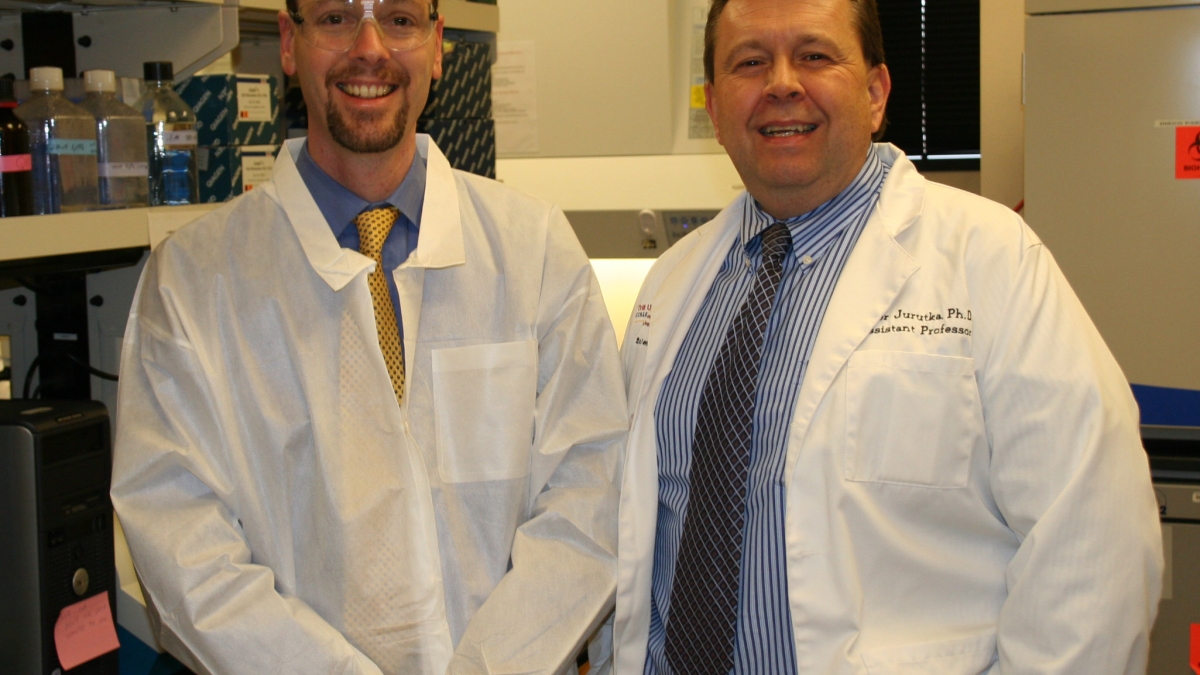ASU-Mayo seed grant addresses irritable bowel syndrome

It’s a disorder that affects roughly one in six Americans, but the medical community currently is frustrated by an inadequate understanding of its causes and a limited ability to diagnose and treat it.
The disorder is irritable bowel syndrome (IBS), and it is the target of a research project by Arizona State University and Mayo Clinic researchers that has received funding through the ASU-Mayo Seed Grant Program.
“IBS is the second-highest cause for work absenteeism after the common cold,” said Amy Foxx-Orenstein, professor of medicine at Mayo Clinic, who brings 25 years of clinical research experience in IBS to this first-of-its-kind research project.
“This syndrome is one of the most commonly diagnosed gastrointestinal disorders. It affects women, men, young patients and the elderly,” Foxx-Orenstein said. “I am very excited to be collaborating with a talented group of ASU scientists in this challenging area.”
Among the ASU professors working with Foxx-Orenstein are Peter Jurutka and Todd Sandrin from the New College of Interdisciplinary Arts and Sciences and Cheryl Nickerson from the School of Life Sciences and Biodesign Institute.
The project’s title is “A new dimension in modeling irritable bowel syndrome (IBS) to elucidate novel diagnostic biomarkers and microbiome signatures.” It will make use of Nickerson’s innovative 3-D organotypic modeling system of human tissues that mimic the structure and function of tissues in the body. Jurutka researches a variety of health-related biochemical topics, including vitamin D, and the researchers will look for a possible causal relationship between variations in vitamin D levels and IBS. Sandrin brings to the project extensive experience investigating the workings of bacteria and other microorganisms in the human intestinal tract.
The ASU-Mayo Clinic study is the first to combine 3-D modeling with varying vitamin D concentrations and patient microbiota specifically for the study of IBS. The researchers will populate 3-D models with gut microbiota from fecal samples from IBS patients or healthy controls recruited from the Mayo Clinic, and supplement the models with a range of vitamin D to mimic normal to deficient levels.
“We are employing a multifaceted perspective in this study, working to determine the relative importance of different factors that may lead to IBS and how they may interact,” Jurutka said.
“The goals are to learn what the mechanisms are that drive the disease and to facilitate development of a more rapid, accurate diagnosis,” added Sandrin.
Many potential causes of IBS are being investigated by researchers around the world, according to Foxx-Orenstein.
“Despite multiple investigations, no single abnormality has been found to be the specific cause for this disorder, though traditionally, the focus has been on alterations in gastrointestinal motility, visceral hypersensitivity, and brain-gut interaction,” she said. “More recent studies have considered the role of inflammation, alterations in fecal flora, bacterial overgrowth, and food sensitivity. Whether a genetic predisposition exists is also being investigated.”
“Working on a university campus, we know it is not uncommon for students to be affected by IBS as the end of the semester approaches, with its final exams and assignments due, so there appears to be a stress component to the disorder in some cases,” Sandrin said.
The partnership combining knowledge and expertise among the ASU and Mayo researchers will enable the group to scale up the project as additional funding is obtained, Sandrin said.
“We are hopeful that potential sponsors of this research will see the value of the project and assist us in taking it to the next level,” he said. “Given that the annual cost of IBS is estimated to be more than $20 billion in the United States alone, an improved ability to diagnose and treat the disorder would provide huge benefits not only for the health of patients but for the health care system and the economy.”
Helping to launch promising new research projects aimed at improving human health is precisely the goal of the ASU-Mayo Seed Grant Program, which has awarded grants to 10 ASU-Mayo teams for 2015 to advance research in critical topics including cancer, bioinformatics, neuroscience technology, detection and imaging, health care delivery, and metabolic disease and obesity.
The seed grant program was launched in 2004. The involvement of Jurutka and Sandrin marks the first time faculty from ASU’s West campus have been involved in an ASU-Mayo seed project. New College is the core college on the West campus.